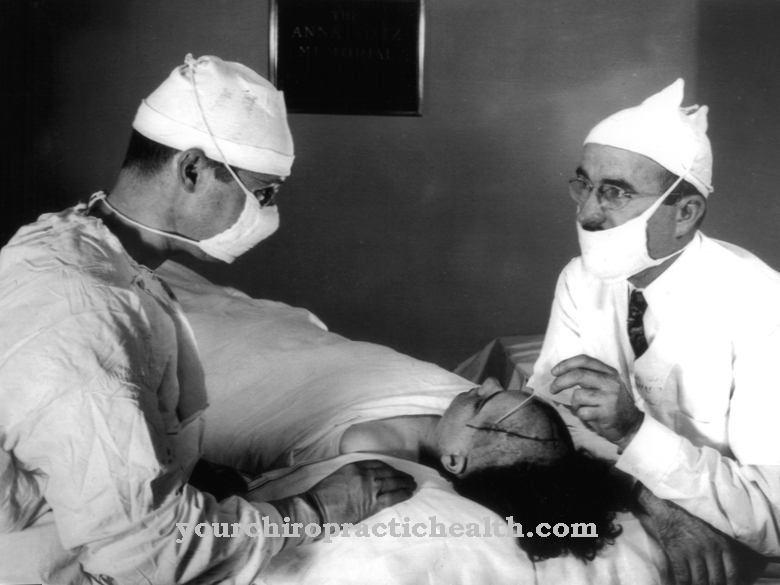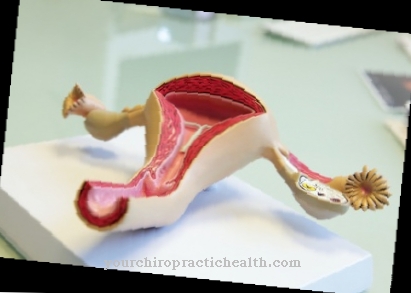At a Balloon dilatation a narrowed section of the vessel is expanded with a special balloon catheter. The procedure is primarily used in vascular surgery.
What is balloon dilatation?

Balloon dilation is one of the minimally invasive procedures. It is used to expand narrowed blood vessels or hollow organs. The term dilatation comes from Latin and means "to expand" or "to enlarge".
The balloon dilatation serves as an alternative to an expensive bypass operation on the heart. For example, it can sometimes be sufficient therapeutically to expand a narrowed coronary artery with the help of an inflatable catheter. Doctors also refer to balloon dilatation as Percutaneous transluminal angioplasty (PTCA) or Percutaneous coronary intervention (PCI).
Function, effect & goals
The most important indications for balloon dilatation are angina pectoris or acute coronary syndrome. Arteriosclerotic vascular stenoses (constrictions) of the outer arteries and the coronary arteries are treated.
Balloon dilation can also be used in gastroenterology to widen the esophagus or bile ducts. In urology, the procedure is used to widen the urethra in the prostate region, while it is used in ear, nose and throat medicine to widen the paranasal sinus ducts. In the case of arteriosclerosis, however, it is not always possible to make the narrowed areas more permeable with balloon dilatation.
Ultimately, the decision on the therapy method depends on the treating doctor. To do this, he determines where the bottleneck is and estimates the level of risk for the patient. A balloon dilatation is useful if there is only a constriction in one of the coronary arteries or if the constriction can be easily reached. The patient's state of health also plays an important role. The chances of success are less good with a severe stenosis.
A balloon dilatation is performed as part of a coronary angiography. The patient first receives a contrast agent with which the coronary arteries can be visualized as an X-ray image on a monitor. A local anesthetic is usually given before the procedure. After opening an artery that is either in the elbow or in the groin, the surgeon provides this with a sheath. This will make it easier to insert the catheter. It can also be more effective in an emergency. The doctor inserts a flexible, narrow wire through the sheath into the heart area.
After reaching the junction between the coronary vessels and the main artery (aorta), an even finer wire is inserted. This is located inside the first wire and is carefully pushed up to the narrow point that needs to be treated. To do this, the doctor needs a good instinct. If this procedure is successful, the balloon catheter can be inserted up to the narrowed point. The doctor uses a connected monitor to see whether the instruments are in the right place. If the folded balloon is in the right place, the surgeon inflates it with the help of high pressure. After a few seconds it lets the pressure drop again.
In this way the harmful deposits can be removed. However, it is usually not sufficient to inflate the balloon only once, which is why it has to be repeated several times. If several balloon dilatations have to take place, this is usually done within one session. If the vessel walls tear open during the procedure, a so-called stent must be inserted. It is an extremely fine mesh made of metal. The stent can be introduced into the constriction via the guide wire. When the balloon is inflated, the metal mesh is pressed against the wall of the blood vessel. This will keep the expanded shape and keep the artery open.
At the end of the balloon dilatation, the balloon and catheter are removed from the body. The patient then remains in bed for a few hours and is closely monitored. If there are no more complications to fear, a pressure bandage is applied.
Risks, side effects & dangers
The positive effect of the procedure can be felt just a short time after balloon dilatation. However, around 35 percent of all patients later re-narrow the arteries, which is known as residual stenosis. As a result, those affected suffer from angina pectoris complaints.
The doctor can determine whether there is residual stenosis with the help of an exercise ECG. After the implantation of a stent, follow-up treatment with medication is required for a period of three to four months. If there are complaints again, balloon dilatation can be performed again.
Balloon dilation is one of the operations on the heart and is associated with certain risks and side effects. During the treatment, the patient often feels an uncomfortable feeling of pressure, which is caused by the expansion of the balloon. Cardiac arrhythmias are also possible during balloon dilatation. In rare cases, the blood clot can move forward, causing a heart attack. Another conceivable complication is vascular perforation, which in turn results in pericardial hemorrhage. In such a case, vascular surgical intervention is often necessary.
However, in order to avoid complications, the patient is constantly monitored by the doctors. In this way, they can intervene immediately if problems actually arise. It is important to have a balloon dilatation carried out in a hospital. A heart surgery emergency team must also be present in this. During the procedure there is a risk of damage to the blood vessels, an intolerance to contrast medium, and a heart attack or stroke. In principle, complications with balloon dilatation rarely occur. Only around two percent of all patients are affected by them.



























